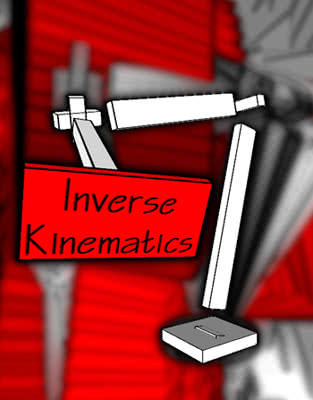Robotic Arm Updated with Inverse Kinematics

</div>
A major challenge in hobby robotics is making the robot useful. Most robots made from RC servos are controlled by moving each joint individually. This is great if you just want to see the robot move, or don't mind programming each individual task. What would make the robot useful is the ability to position to manipulator at a position and orientation without worrying about joint angles. Inverse kinematics is the first major step towards that goal.
A major challenge in hobby robotics is making the robot useful. Most robots made from RC servos are controlled by moving each joint individually. This is great if you just want to see the robot move, or don't mind programming each individual task. What would make the robot useful is the ability to position to manipulator at a position and orientation without worrying about joint angles. Inverse kinematics is the first major step towards that goal.
Inverse kinematics solves the joint angles with an algorithm. Given a position and orientation the joint angles are calculated backwards which makes programming the robot significantly easier, but it also makes the programming much more difficult. The payoff for solving the kinematics equations is worth it.
Here's a short demonstration video showing my robotic arm stacking blocks. This was impossible using only joint positioning, but using the inverse kinematics solution the robotic arm is easy to use.
Try playing with the simulation for yourself. Click here to play with a demo version.
For those of you who may not be running a modern browser there's a video.
The video demonstrates the robot arm moving a target rectangle to different positions and orientations. You may think, so what, and that's the point. The robot now moves intuitively and easily without the user knowing any different.
Here's a short demonstration video showing my robotic arm stacking blocks. This was impossible using only joint positioning, but using the inverse kinematics solution the robotic arm is easy to use.
Try playing with the simulation for yourself. Click here to play with a demo version.
For those of you who may not be running a modern browser there's a video.
The video demonstrates the robot arm moving a target rectangle to different positions and orientations. You may think, so what, and that's the point. The robot now moves intuitively and easily without the user knowing any different.
